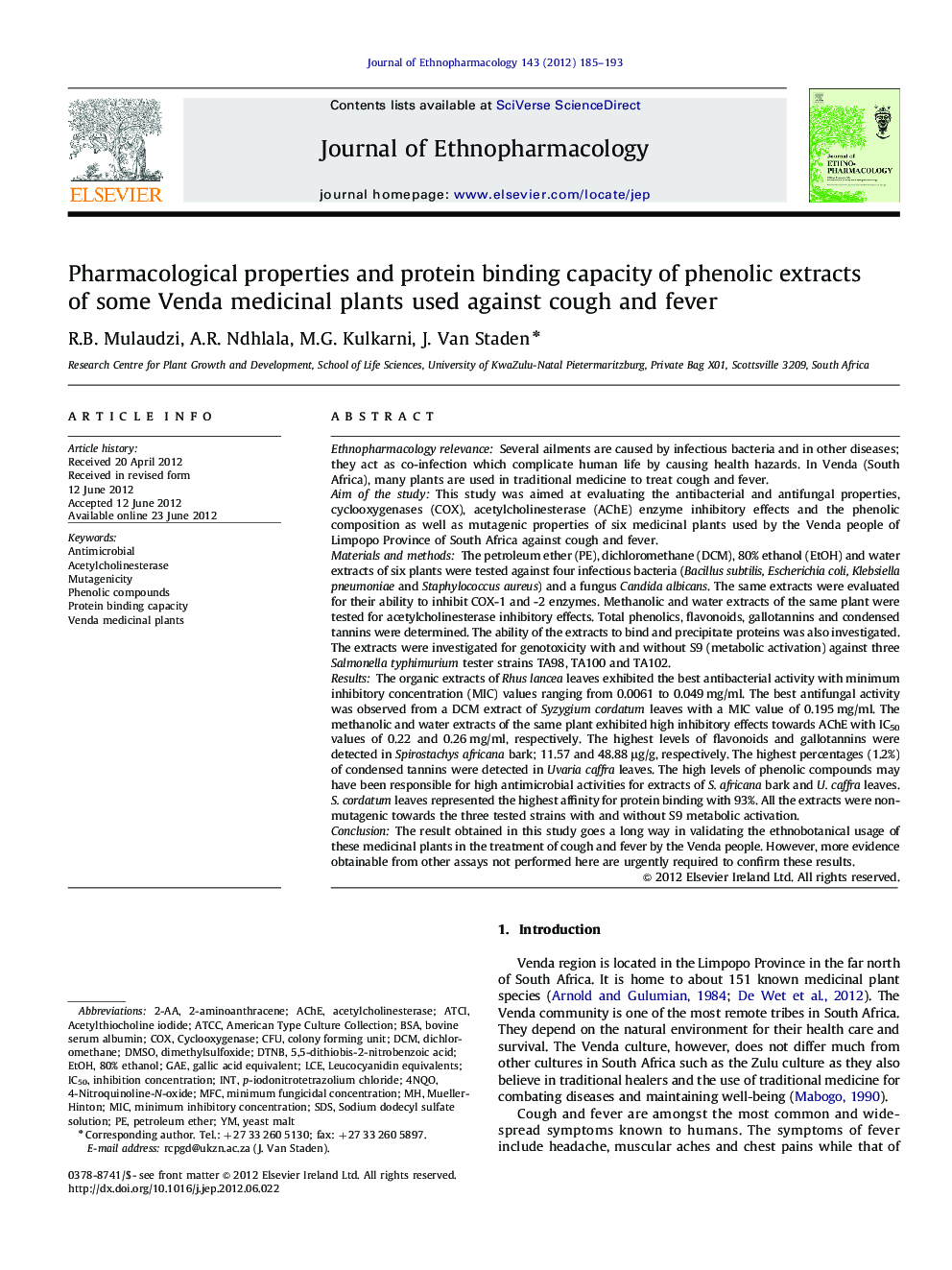| کد مقاله | کد نشریه | سال انتشار | مقاله انگلیسی | نسخه تمام متن |
|---|---|---|---|---|
| 5838468 | 1123979 | 2012 | 9 صفحه PDF | دانلود رایگان |

Ethnopharmacology relevanceSeveral ailments are caused by infectious bacteria and in other diseases; they act as co-infection which complicate human life by causing health hazards. In Venda (South Africa), many plants are used in traditional medicine to treat cough and fever.Aim of the studyThis study was aimed at evaluating the antibacterial and antifungal properties, cyclooxygenases (COX), acetylcholinesterase (AChE) enzyme inhibitory effects and the phenolic composition as well as mutagenic properties of six medicinal plants used by the Venda people of Limpopo Province of South Africa against cough and fever.Materials and methodsThe petroleum ether (PE), dichloromethane (DCM), 80% ethanol (EtOH) and water extracts of six plants were tested against four infectious bacteria (Bacillus subtilis, Escherichia coli, Klebsiella pneumoniae and Staphylococcus aureus) and a fungus Candida albicans. The same extracts were evaluated for their ability to inhibit COX-1 and -2 enzymes. Methanolic and water extracts of the same plant were tested for acetylcholinesterase inhibitory effects. Total phenolics, flavonoids, gallotannins and condensed tannins were determined. The ability of the extracts to bind and precipitate proteins was also investigated. The extracts were investigated for genotoxicity with and without S9 (metabolic activation) against three Salmonella typhimurium tester strains TA98, TA100 and TA102.ResultsThe organic extracts of Rhus lancea leaves exhibited the best antibacterial activity with minimum inhibitory concentration (MIC) values ranging from 0.0061 to 0.049 mg/ml. The best antifungal activity was observed from a DCM extract of Syzygium cordatum leaves with a MIC value of 0.195 mg/ml. The methanolic and water extracts of the same plant exhibited high inhibitory effects towards AChE with IC50 values of 0.22 and 0.26 mg/ml, respectively. The highest levels of flavonoids and gallotannins were detected in Spirostachys africana bark; 11.57 and 48.88 μg/g, respectively. The highest percentages (1.2%) of condensed tannins were detected in Uvaria caffra leaves. The high levels of phenolic compounds may have been responsible for high antimicrobial activities for extracts of S. africana bark and U. caffra leaves. S. cordatum leaves represented the highest affinity for protein binding with 93%. All the extracts were non-mutagenic towards the three tested strains with and without S9 metabolic activation.ConclusionThe result obtained in this study goes a long way in validating the ethnobotanical usage of these medicinal plants in the treatment of cough and fever by the Venda people. However, more evidence obtainable from other assays not performed here are urgently required to confirm these results.
185
Journal: Journal of Ethnopharmacology - Volume 143, Issue 1, 30 August 2012, Pages 185-193